In French, articles are determinants used before nouns to indicate their gender and number. To use French articles (definite, indefinite), you need to know the gender (masculine, feminine) of the noun and the number (singular, plural) of the noun that you’re referring to.
In English, articles are a type of determiner that precedes and modifies nouns, meaning, articles come before nouns and modify accordingly. It provides information about the definiteness of the nouns like their number and gender.
- Stationaries are masculine except eraser (gomme) and sharpner (taille crayon).
- Matin, soir, après-midi are masculine and night (nuit) is feminine.
- All drinks are masculine except beer (bière) and lemonade (limonade).
In French, the definite articles are changed depending on the nouns:
- Gender
- Plurality
- First Letter of the word
There are three Definite Articles and an abbreviation.
| Definite Articles | Usage | Examples |
| le | masculine nouns | le Fils |
| la | feminine nouns | La fille |
| les | plural nouns | les fils, les filles |
| l’ | nouns starting with vowels: a,e,i,o,u,h | l’enfant |
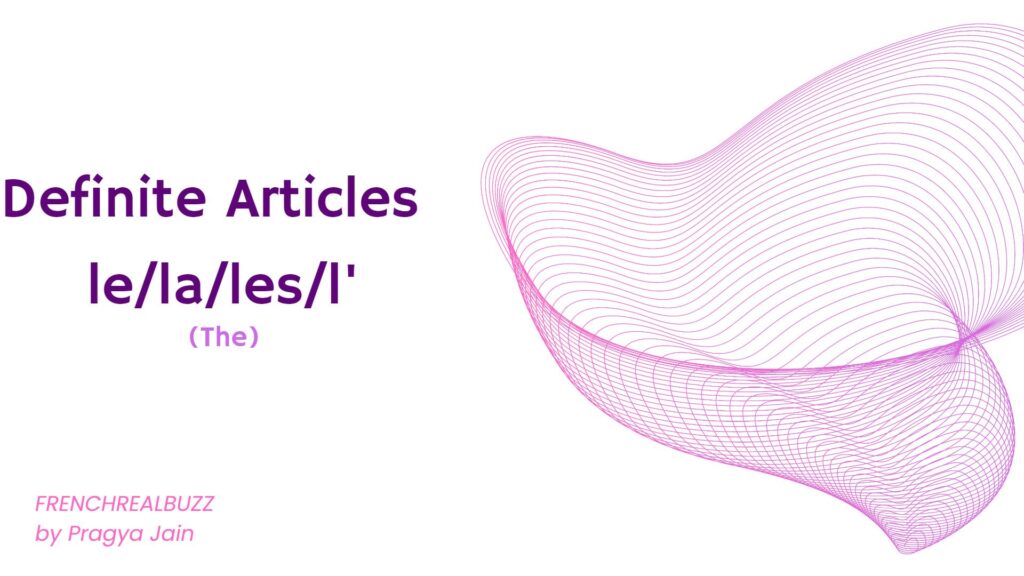
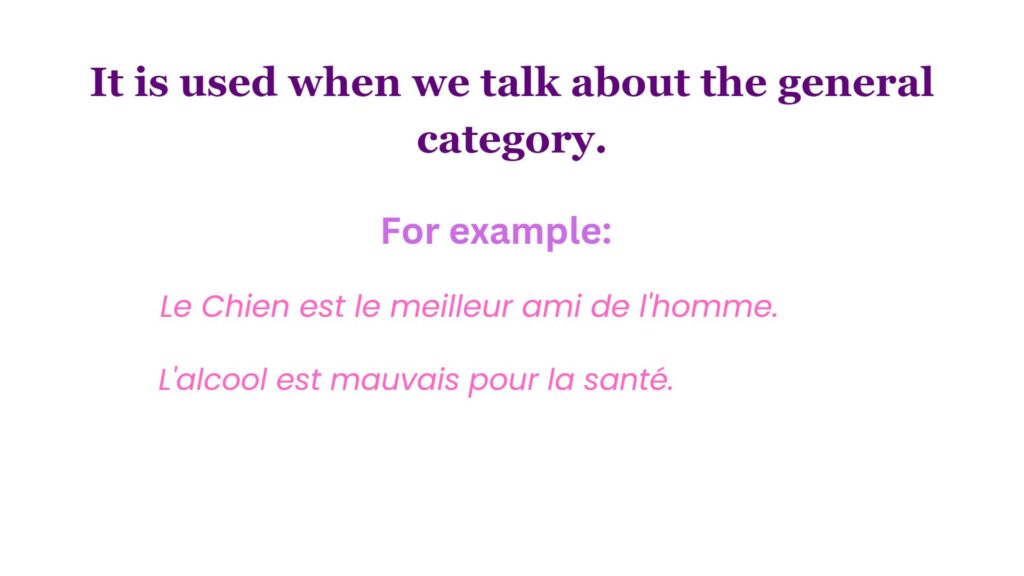
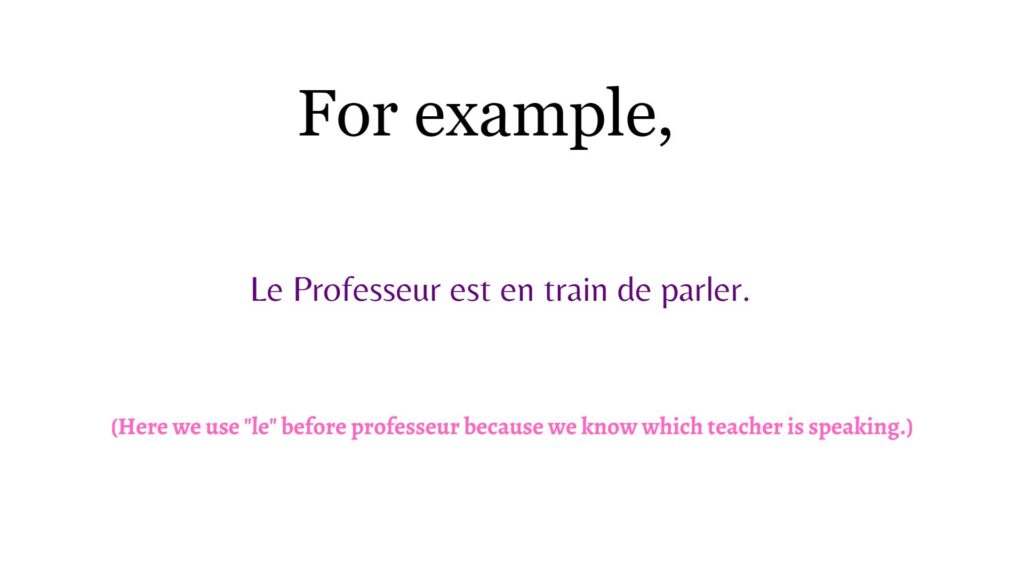
- Le professeur est en train de parler. – ‘Le’ is used because we know which teacher is speaking.
- L’alcool est mauvais pour la santé. – L’ is used because talking about general category.
Similarly, Indefinite articles take different forms depending on Gender and Plurality.
| Indefinite Articles | Usage | Examples |
| un | masculine nouns | un fils |
| une | feminine nouns | une fille |
| des | plural nouns | des fils, des filles |
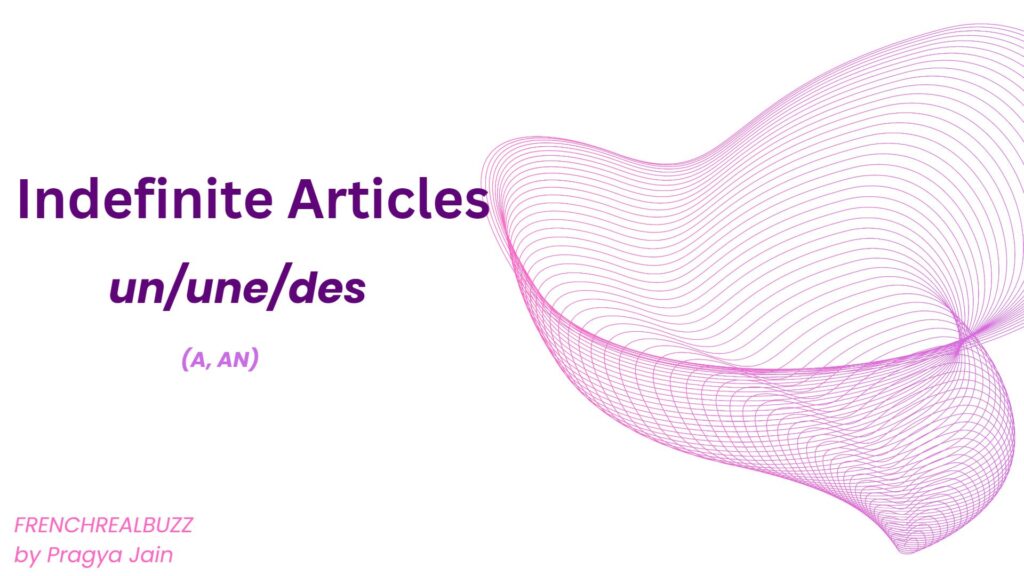
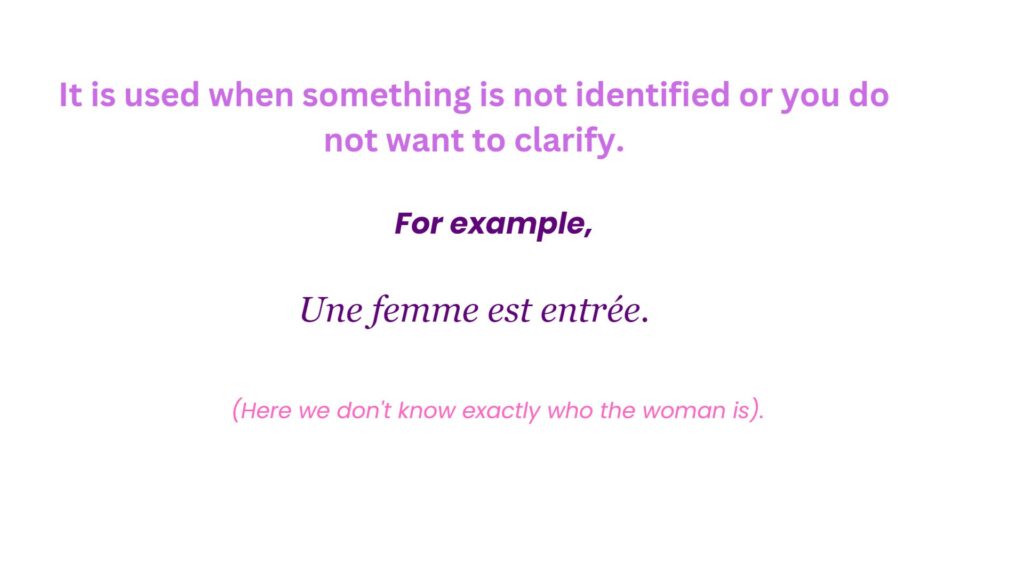
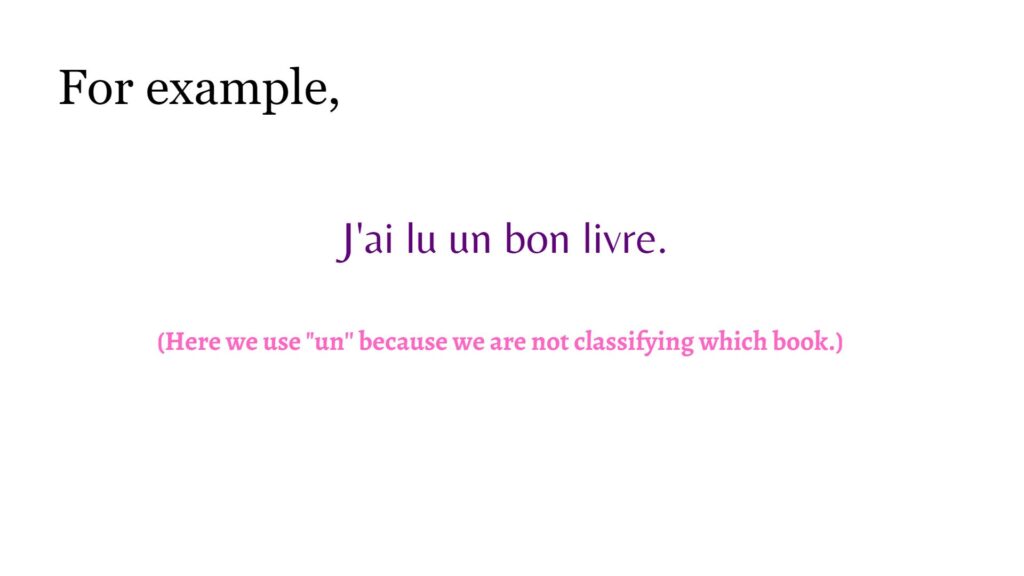
- J’ai lu un bon livre. – Un is used because we are not accurate and not classifying.
- Une femme est entrée. – Une is used because we don’t know the woman.
“Some”
Note that des, like les, is used in French before plural nouns when no article is used in English. For example, You are looking at photographs in an album. The statement would be “I am looking at the photographs”. But it cannot be translated into French as “Je regarde photographies” because an article is required to tell which photographs are being looked at.
If it is a set of specific pictures the French statement should be “Je regarde les photographies.” which means “I am looking at the photographs.” On the other hand, if the person is randomly browsing the album, the French statement should be “Je regarde des photographies.”
From the above example, it is understandable that les is used when the specification is being mentioned. And when talking about general or random nouns then des is used. This example is the best to understand as I also read it somewhere while browsing through the internet and I find it very useful.
The Article Plays An Important Role In French.
- Indicating definiteness: Definite articles (les articles définis) indicate that the noun refers to a specific person, thing, or idea. They help specify whether the noun is known or already mentioned in the context. For example, “le livre” means “the book,” referring to a particular book that is known or specified in the conversation.
- Determining gender: French nouns have grammatical gender (masculine or feminine), and articles help indicate the gender of the noun they modify. This is especially important because other parts of the sentence, such as adjectives and verb agreement, are influenced by the gender of the noun. For example, “un chien” (a dog) uses the masculine article “un” with the masculine noun “chien.”
- Expressing number: Articles also provide information about the number (singular or plural) of the noun they precede. Singular articles are used before singular nouns, and plural articles are used before plural nouns. This helps indicate whether there is one or more than one of the nouns. For example, “des livres” means “some books,” indicating multiple books.
- Expressing possession: In French, definite articles are used to indicate possession instead of possessive pronouns as used in English. For example, instead of saying “my book,” one would say “le livre” (the book) to express ownership.
See more examples on the Vocabulary post to check your understanding and some exceptions in Articles.
https://www.youtube.com/watch?v=054MD3i3RDE
